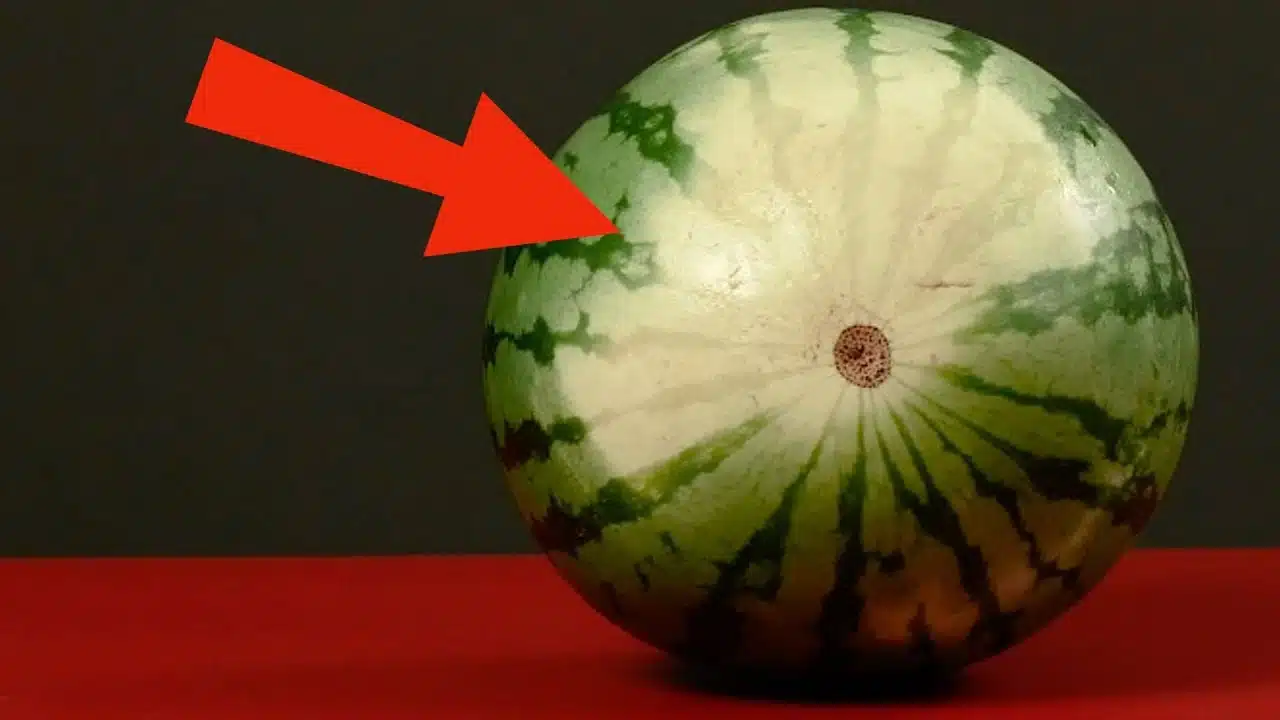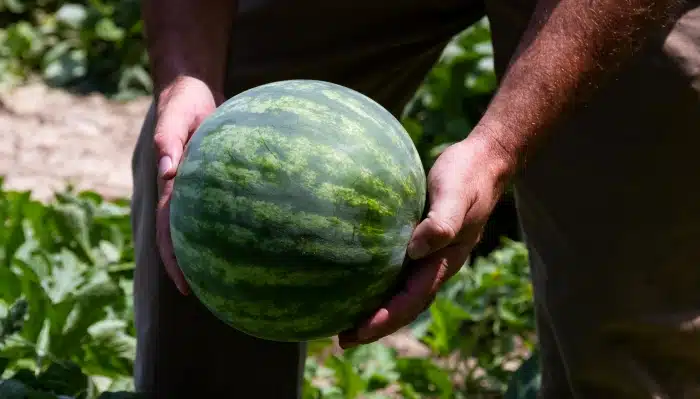It’s the essential fruit of summer, the one we cut into large slices when we get back from the beach, the one we enjoy in chilled cubes as an aperitif or in a vitamin-packed smoothie… But between watermelons that are too bland, underripe or soft inside, the choice can quickly turn into a headache. What if you could spot the rare gem at first glance, without even taking out your knife? It’s entirely possible… provided you know these few clues that many ignore!
-
The floor stain: your best visual clue
Have you ever noticed that lighter, often round, area on one side of the watermelon? This is called field spot . It forms where the fruit was resting on the ground.
If it’s creamy yellow or orange-yellow , it’s a good sign: the watermelon has ripened peacefully on the plant. On the other hand, a pale or greenish
spot indicates that it was picked too early… and may lack sugar.
-
Dark skin, a sign of maturity

Another clue that doesn’t lie: the texture and appearance of the skin. Dull, slightly rough skin is often a sign that the fruit is ripe.
On the contrary, a watermelon that looks very smooth and shiny is generally not yet fully ripe. Also remember to check that there are no bumps or suspicious spots: a firm and uniform skin is ideal.
-
The tapping test (yes, it works!)

This is a grandmother’s trick that still works very well: gently tap the fruit with your palm or fingers.
If you hear a hollow, vibrating sound , bingo! This means the flesh is juicy.
On the other hand, a dull or muffled sound could indicate that the fruit is overripe… or even mushy.
-
These mysterious veins are good news
continued on next page
